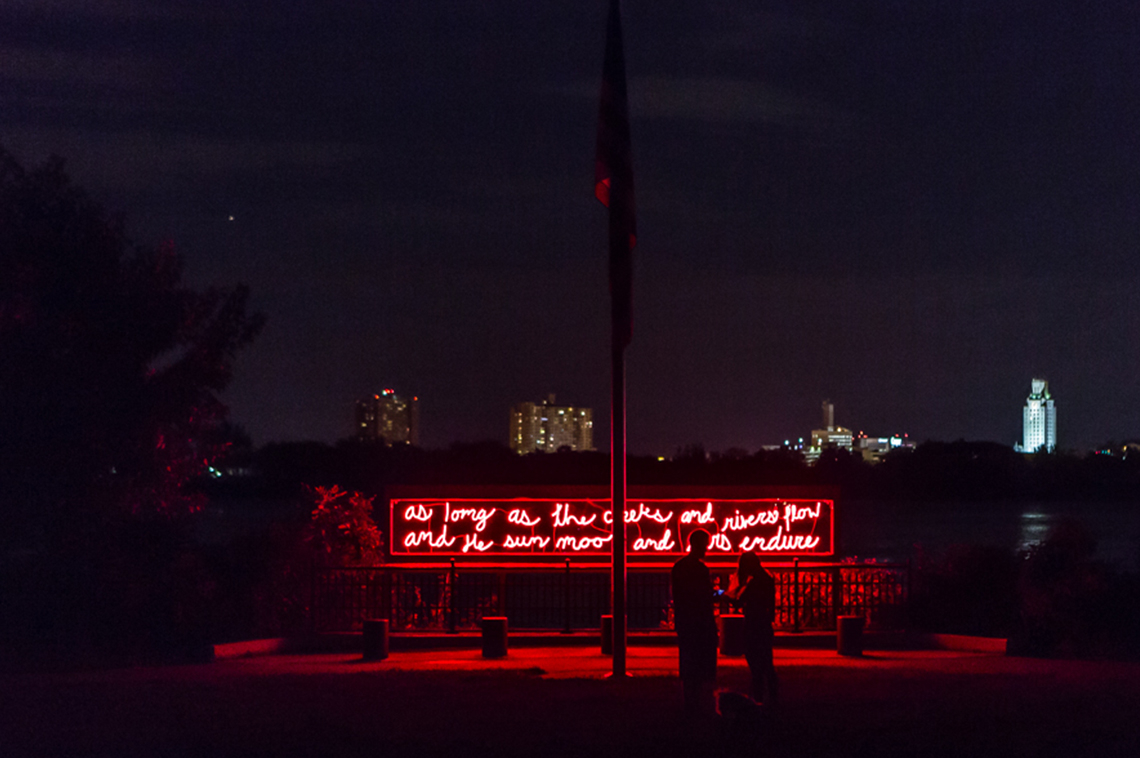
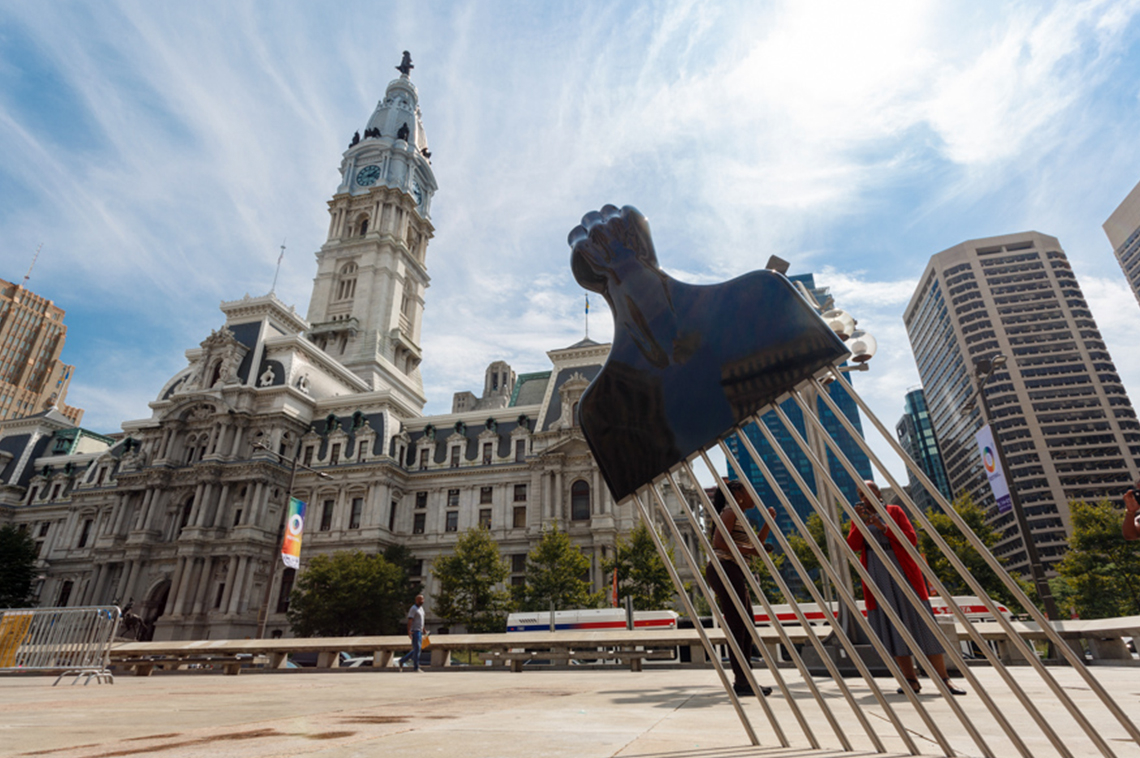
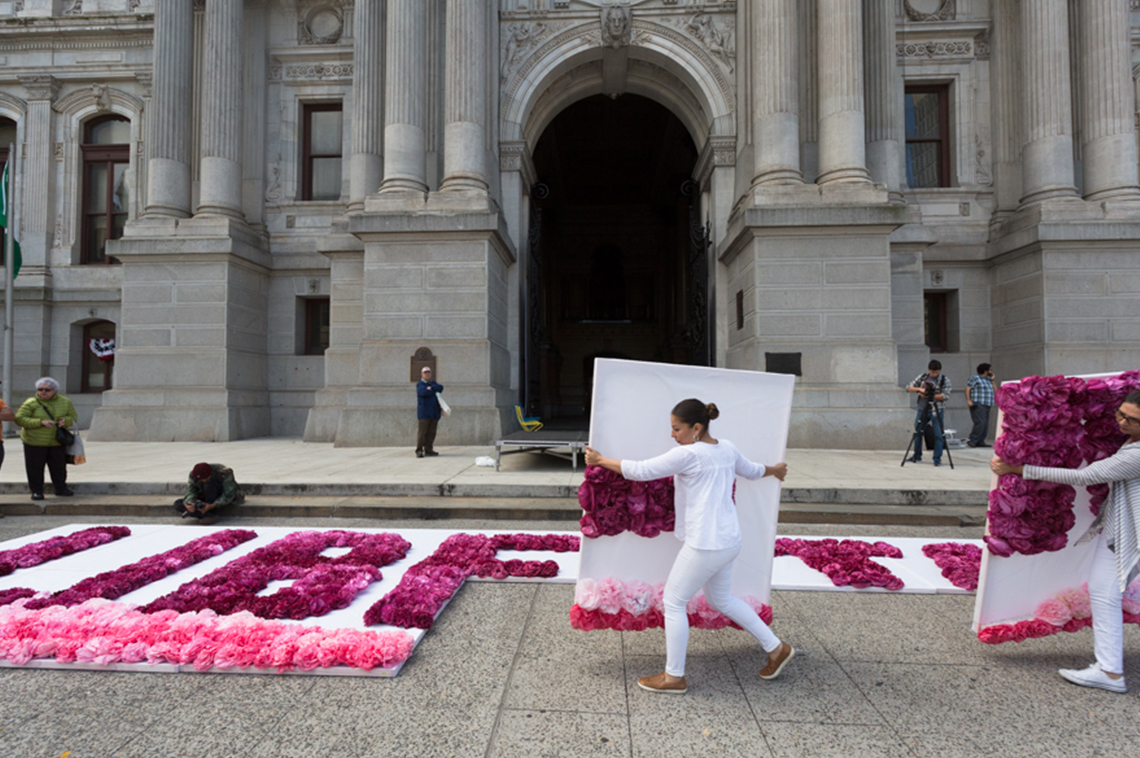
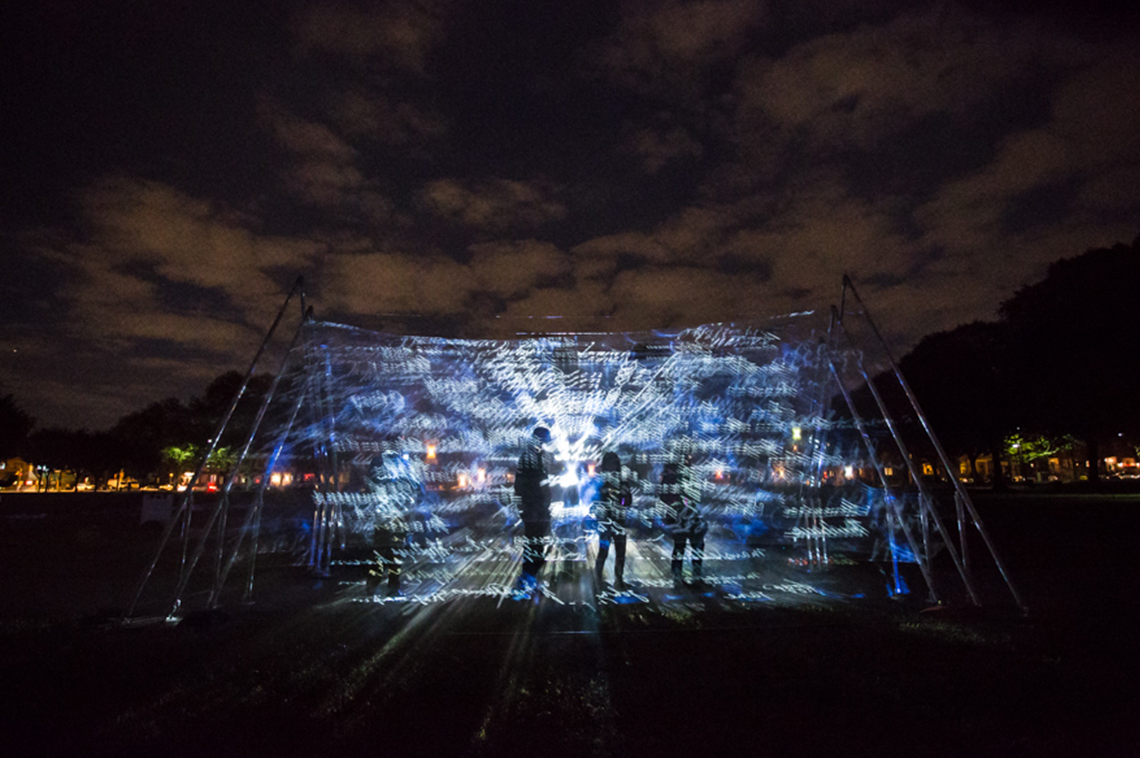
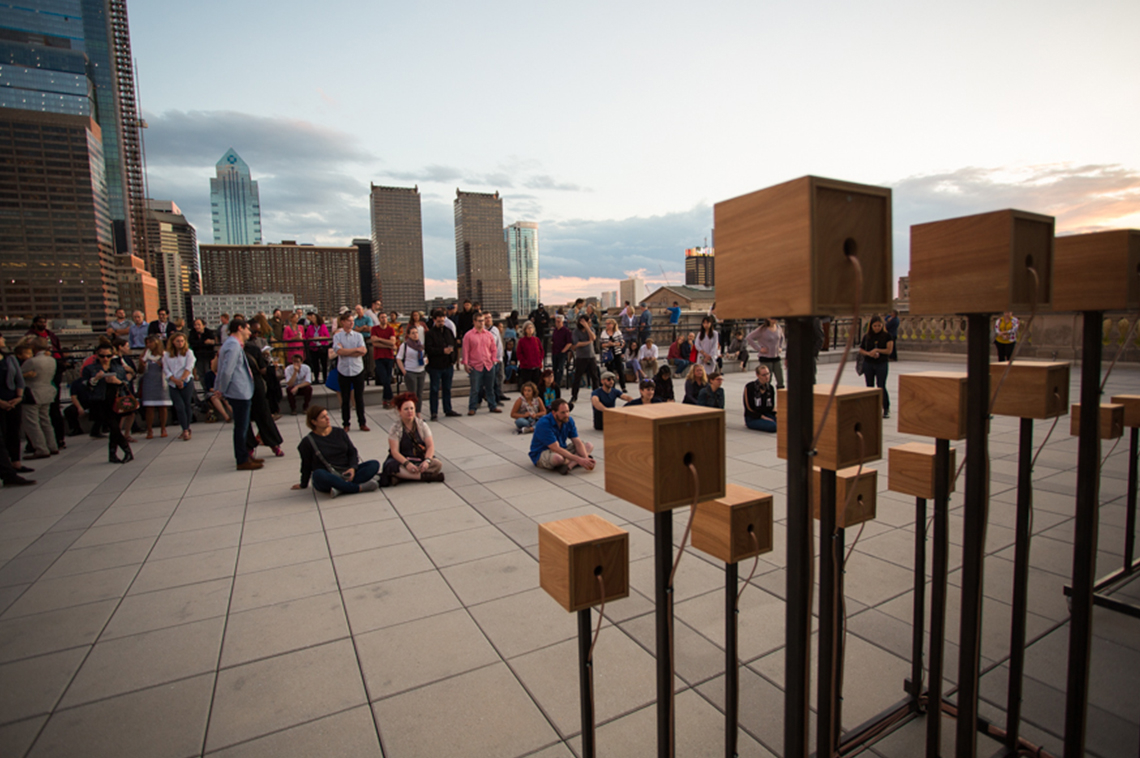
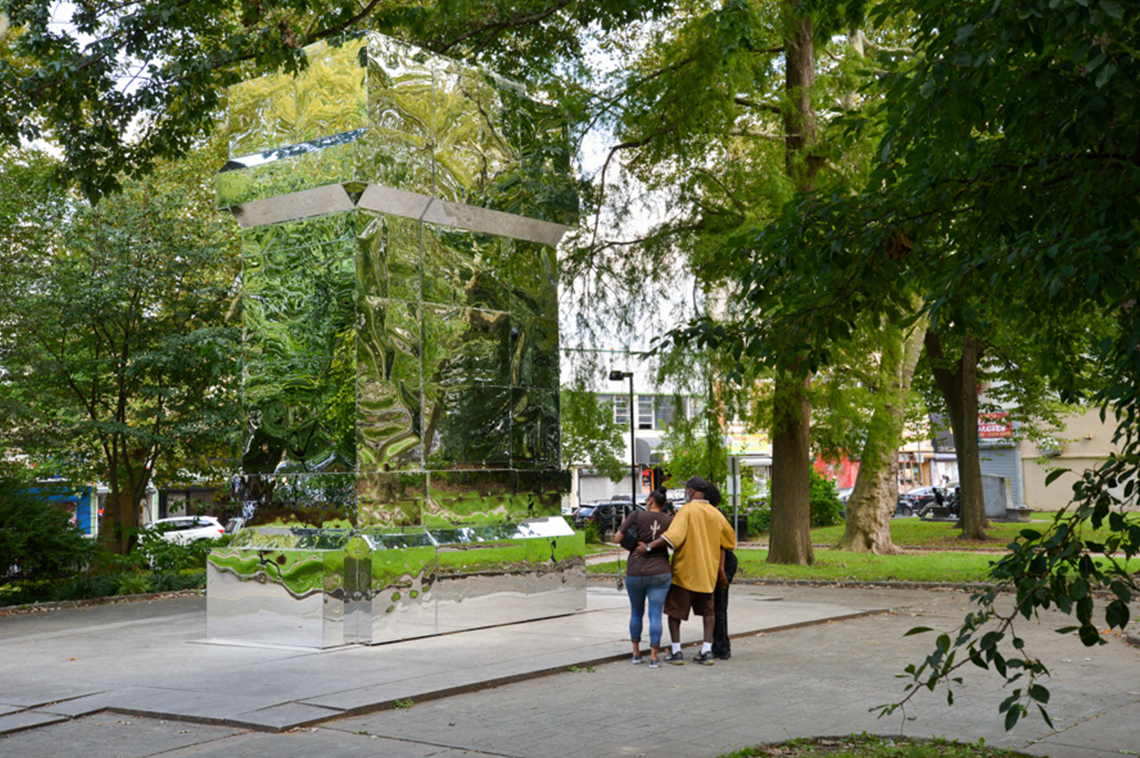
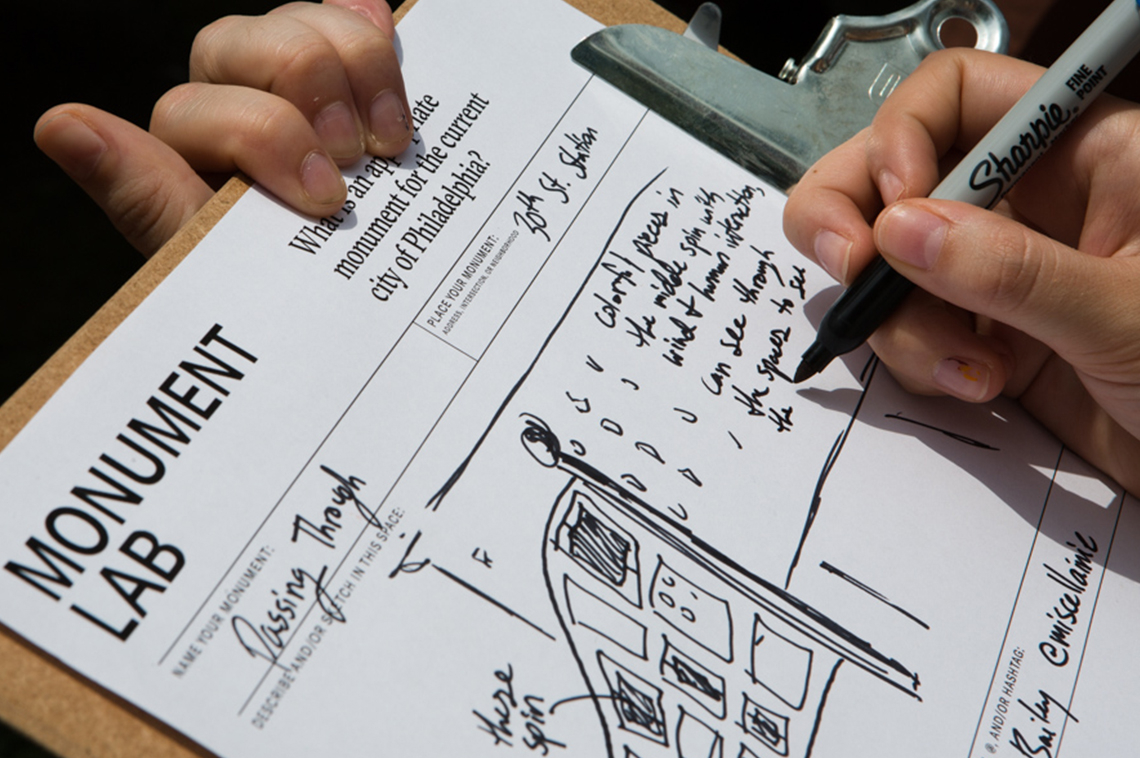
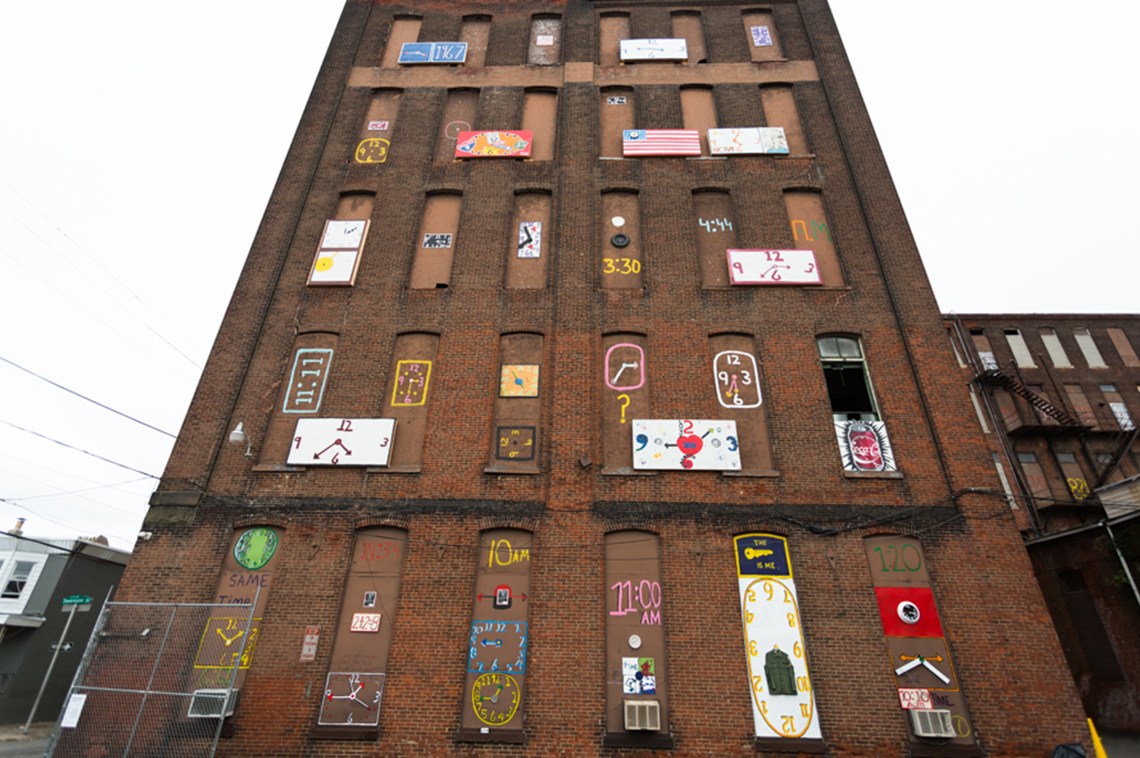
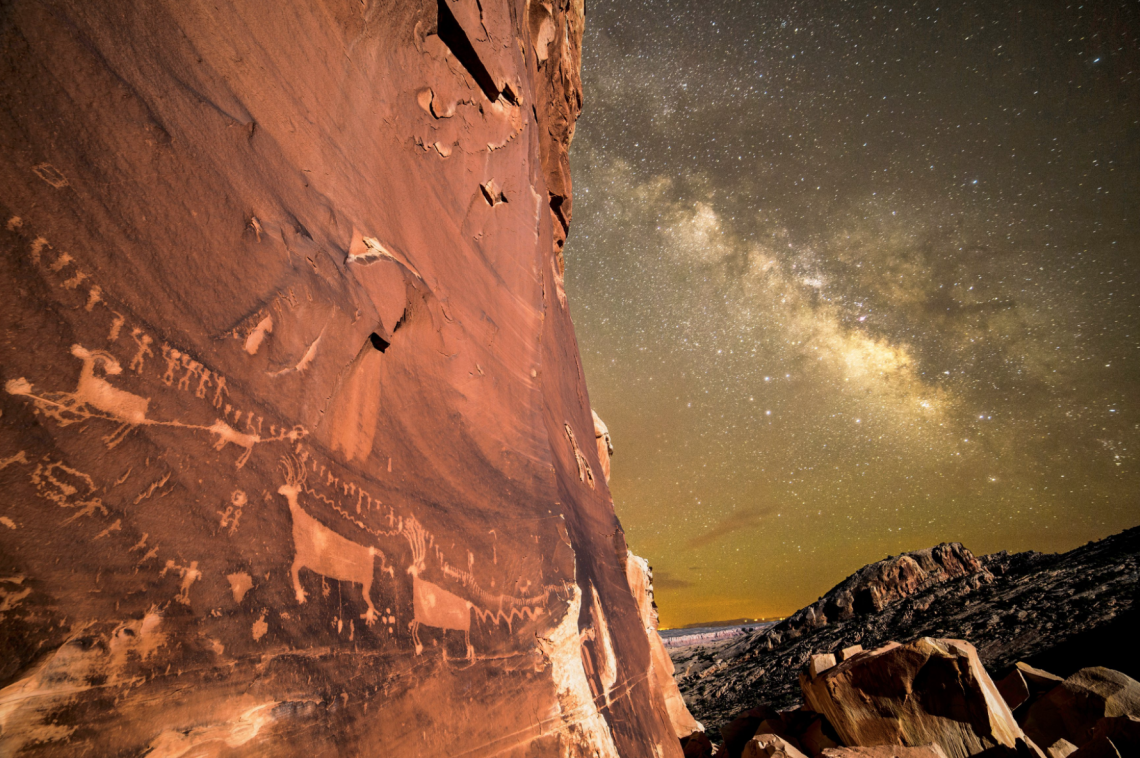
How much have you thought about monuments? Across America, our landscape is populated by public art that commemorates, honors, reminds, catalogues—but where is the work that asks questions? Across nine weeks in the fall of 2017, a project from Mural Arts Philadelphia is doing just that. Monument Lab is a public art and history project, curated by Paul M. Farber and Ken Lum, that leaves room for uncertainties. The guiding question behind the project is: “What is an appropriate monument for the current city of Philadelphia?”
The question sounds simple, but it opens up lines of inquiry around the monuments that already exist, and about the process by which monuments get made. It brings attention to why we put up monuments in the first place. It reminds us that narrative has the power to shape history and collective memory and, as a result, the future.
Twenty artists answered this question with temporary monuments for Philadelphia that range from stone to digital, honoring everyday objects and unrecognized histories, re-imagining places that we think we know well. The projects are located around the city’s public squares and parks, in conversation with each other and with the preexisting landmarks around them—and with people all over the city, as nearby pop-up “laboratories” collect and catalogue monument proposals.
Monument Lab
Monument Lab is about Philadelphia, but it’s also part of a much larger conversation about who and what gets represented in public space, and who is doing the representing. On September 26, 2017, unrelated to Monument Lab, Philadelphia unveiled a new monument to local civil rights activist Octavius Catto. This was the first sculpture of an individual African American on Philadelphia public land—it speaks not to a sea change in our current monument-making systems, but to the incredibly large blind spots of institutional and systemic racism that are at work across America.
As monuments can be a method for looking away from uncomfortable histories and upholding existing power structures, it’s exciting to see art do the opposite. In Philadelphia’s Penn Treaty Park, artist Duane Linklater’s Monument Lab project is In Perpetuity, a neon version of language from the 1682 treaty between William Penn and Lenape Chief Tamanend. Written in his own daughter’s handwriting, Linklater’s sign is an ironic nod to the treaty’s ephemeral nature: it was declared to last “as long as the creeks and rivers flow and the sun, moon, and stars endure,” and instead, it was broken repeatedly. The sign is lovely and wistful, written in light that unravels just like the treaty.
Bears Ears Monument
In December 2016, the Bears Ears landscape of southeastern Utah was declared the Bears Ears National Monument: 1.35 million acres of monument. This proclamation recognizes the area as “an extraordinary archaeological and cultural record that is important to us all, but most notably the land is profoundly sacred to many Native American tribes, including the Ute Mountain Ute Tribe, Navajo Nation, Ute Indian Tribe of the Uintah Ouray, Hopi Nation, and Zuni Tribe.” This is monument as landscape, monument as act of preservation, and perhaps monument as attempt at restitution. In a country founded on land forcibly taken from indigenous peoples, we should be careful not to co-opt indigenous cultural sites—the management and stewardship of Bears Ears is done in conjunction with an inter-tribal coalition from the five tribes named above, and has been verbally supported by 30 total tribes with ties to the region. Bears Ears has been funded by ArtPlace America to promote a sustainable economic future in San Juan County, UT through culture, community, and the arts.
Bears Ears is an important example because it points to one of the questions behind Monument Lab: who is doing the telling here? How does perspective shape narrative? Artist Hank Willis Thomas designed All Power to All People, an eight-foot-tall Afro pick installed at the center of Philadelphia, to answer Monument Lab’s central question. The sculpture honors this familiar, everyday object, invoking it as a symbol of collective identity and culture. The Battle Is Joined is a mirrored echo of a preexisting monument; Monument Lab artist Karyn Olivier wanted neighborhood residents to feel that they were truly reflected in the public art narrative around them. Made out of mirror instead of stone, the towering structure comes alive as the nearby trees move, as local kids make funny faces at each other, as people see themselves as worthy of reflection and recognition.
What if we could rethink our approach to monuments?
This project has been in the works for several years, though its launch in the fall of 2017—at the height of a national conversation around monuments, confederate and otherwise—turned out to be incredibly timely. Many American monuments are created in the name of preserving history (think of the Washington Monument in DC; Philadelphia’s Liberty Bell; civil rights sites across the American South) and some who are against modifying or taking down monuments rest on this argument. But as we come to the end of Monument Lab, we’re reminded of one of its most important (and most overlooked) aspects: it’s temporary. All of these projects are meaningful and important, and all of them will disappear. Some lasted a single night, and some were made out of experience or sound. What if we could rethink our approach to monuments? If monuments can be purposefully ephemeral, maybe we have more power over public space than we’ve been taught.
See monumentlab.muralarts.org for a full list of funders and partners.





